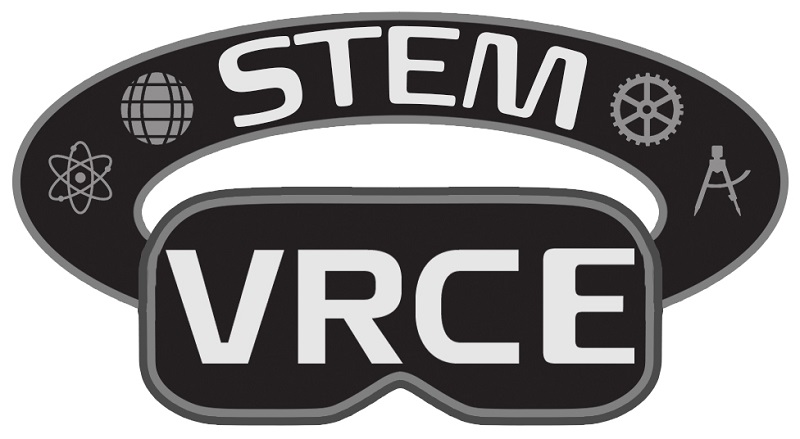Bringing STEM careers to rural students: NSF grant will use virtual reality videos to expose high schoolers to in-demand technical careers
Bringing STEM careers to rural students: NSF grant will use virtual reality videos to expose high schoolers to in-demand technical careers

A $496,963 grant from the National Science Foundation will help Rowan University researchers from two colleges introduce STEM careers to high school students in rural South Jersey.
Led by professors Sarah Ferguson and Kara Ieva from the College of Education and Christopher Winkler from the Ric Edelman College of Communication & Creative Arts, the grant will use virtual reality 360-degree videos to introduce underrepresented students, particularly women and students of color, to in-demand STEM careers.
The team will help students learn more about careers through five-minute VR videos featuring professionals from underrepresented groups who work as survey mapping technicians, geological and petroleum technicians, quality control analysts and environmental engineering technicians, among other careers.
Researchers will work with school counselors at Delsea, Cumberland and Northern Burlington County regional high schools to incorporate the videos into career development modules for 11th grade students.
The project’s title is STEM-VRCE (STEM Through Virtual Reality Career Exploration).
“The types of careers we are highlighting are often overlooked when we talk about STEM careers. They are high need and growing in our region,” says Ferguson, assistant professor of qualitative methods in the Department of Interdisciplinary and Inclusive Education and principal investigator on the grant.
“Many students are not aware of these career options and have limited access to explore these careers, particularly in rural communities. Yet, these are highly trained technical fields. They pay well and often require a two-year degree or certificate.”
The goal of the project is to conduct research on the efficacy of VR videos and career exploration modules in increasing student knowledge of the careers, increasing student career decision-making self-efficacy, and developing clear outcome expectations related to the focus careers. The project will be evaluated externally to assess its overall fidelity, scalability and sustainability. A sample size target of 300 students has been set for the study.
'An immersive virtual field trip'
Industry partners from underrepresented groups in STEM-- women and ethnic/racial minorities—will be featured in the 360 VR videos. Winkler, with assistance from undergraduate radio/television/film students, will produce the videos, which will showcase each individual’s work and responsibilities in their work environments.
“It’s an immersive virtual field trip,” says Winkler. “That’s the goal. Viewers will basically be transported to another space. They will get a guided, 360-degree, live-action tour of what these STEM technicians do in their work. It will be an authentic look at each profession.”
Though they can be viewed on phones or online, the videos will be best experienced with VR headsets. The grant provides funding to purchase the equipment for each school in the study.
Ieva, a professor of Counseling in Educational Settings, will develop the curriculum. She will pair the VR videos with a curriculum guide for school counselors and materials for students to use as they view the videos for each STEM career.
The curriculum will be designed around Social Cognitive Career Theory (SCCT), which identifies career choice as a combination of individual self-efficacy regarding a career (belief that the individual can do the work) and outcome expectations (belief that working in the career will produce positive outcomes for the individual).
“There’s a huge potential for this type of career exploration,” says Ieva. “It’s innovative and it increases opportunities for students. Students need auditory, tactile and visual cues for everything they do. STEM-VRCE will bring real life to their front door.”
According to Ferguson, researchers expect that the project will increase interest in STEM careers and ultimately increase the STEM workforce.
Overlooked areas in STEM careers
“Expanding the social knowledge of these fields provides more students with opportunities to undertake meaningful careers in STEM, better supporting the STEM workforce and continuing the development of STEM in the United States,” says Ferguson, noting that career fields such as surveying and mapping technicians, geological and petroleum technicians, environmental engineering technicians and quality control analysts, have double-digit projected growths in the next six years, both in New Jersey and nationally.
Ferguson notes that the careers the study highlights are highly trained technical fields that many students don’t know exist.
“These are often overlooked areas in STEM careers,” says Ferguson. “We mostly talk about engineers, but not the other professionals who work with them. Yet, engineering technicians are a necessary component of the field.”
Ferguson notes that rural school districts make up over 50 percent of the public school districts in the nation. But those districts often lack access and funding for special projects and programs, such as STEM career exploration and advanced courses.
“We have a generation of kids coming out of rough economic situations,” Ferguson says. “And if they don’t have a strong relationship with a mentor or a teacher, they can kind of get lost. This can help them make a better choice…or at least help them reflect on whether this type of career appeals to them or why it does not.”
If the study shows STEM-VRCE is effective, “it could be scaled up to support career exploration and advising around multiple STEM career clusters and potentially change the way we offer career exploration programming,” Ferguson adds.